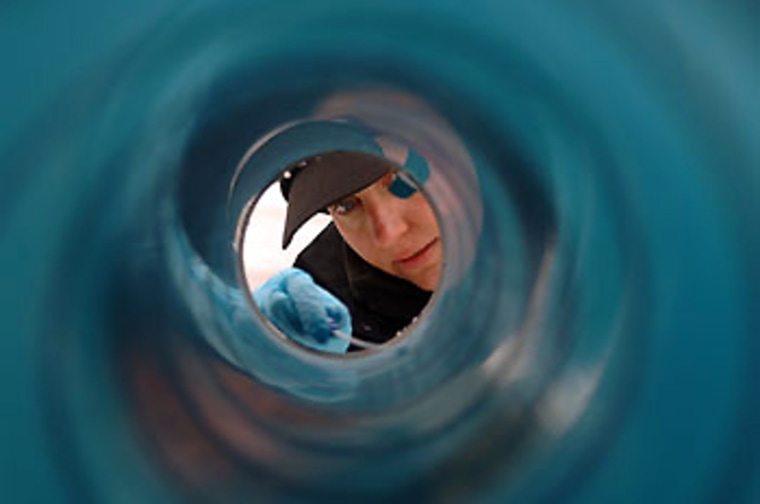Living microbes found in what could be 1 million-year-old ice on a remote Arctic island support the theory that the frozen planet Mars could also sustain life, researchers said Tuesday.
An international team drilled ice core samples on the remote Svalbard islands at the extinct Sverrefjell volcano. They said that is the only place on Earth with the same minerals — called magnetite crystals — as those found on a meteorite from Mars that was discovered in the Antarctic in 1996.
"We have discovered a microbiological oasis in natural tubes of blue ice on Svalbard. This is an extremely tough environment in which we would not have expected to find life," said team leader Hans E.F. Amundsen, of the University of Oslo.
Space probes sent to Mars by NASA from the United States and by the European Space Administration have showed evidence of water in the form of ice on the Red Planet.
Water is a key building block for living organisms, although many scientists believe the planet is now too cold to sustain life, a theory the Norwegian-led team's findings could challenge.
Martian hot springs?
Mars is cold and dry with large caps of frozen water at its poles. However, it shares features with the Arctic Svalbard archipelago, such as permafrost, volcanoes and possibly hot springs pushing water through the frozen surface, the team said.
Yervant Terzian, an astronomy professor at Cornell University in Ithaca, N.Y., said the findings were interesting, but added it was not enough to conclude that there is life on Mars.
"You need to have much more evidence of many different sorts," said Terzian, who was not involved with the project.
Two years of probing
The team, called the Arctic Mars Analog Svalbard Expedition, began probing the islands in 2003, taking core samples at sites that include the ice-filled volcanic tubes of the Sverrefjell, which erupted through thick ice about 1 million years ago.
"Such ice-filled volcanic tubes are probably also found on Mars, and could be a refuge for life there," said the team's scientific leader, Andrew Steele, of the Carnegie Institution in Washington.

The Svalbard Islands are about 500 kilometers (300 miles) north of the Norwegian mainland, and are largely covered with glaciers and permafrost.
The team took core samples with specially designed sterile drills, to avoid contamination by surface bacteria, a statement said. The living microbes were detected in the ice by special biological sensors, developed by NASA's Jet Propulsion Laboratory.
Steele's team then used a series of instruments to determine the number and type of microbes, partly by scanning protein microarrays, which are created by putting molecules in specific order on a glass plate so they can be studied by microscope.
"These protein microarrays, which will be used on board the space shuttle in 2006, are specially designed to show any contamination by humans. Our results show that we managed to maintain sterile conditions," Steele said.
Tough survivors
The samples were also studied in laboratories at Carnegie, the Smithsonian Institution, the University of Oslo, Penn State University in Pennsylvania and the University of Leeds in Britain.
"Microorganisms in ice are tough survivors," said Liane Benning, of the University of Leeds. "Small ecosystems in the ice had apparently adapted to extremely cold conditions."
The team is also developing biosensor technology that could be used to help detect any life on Mars.
